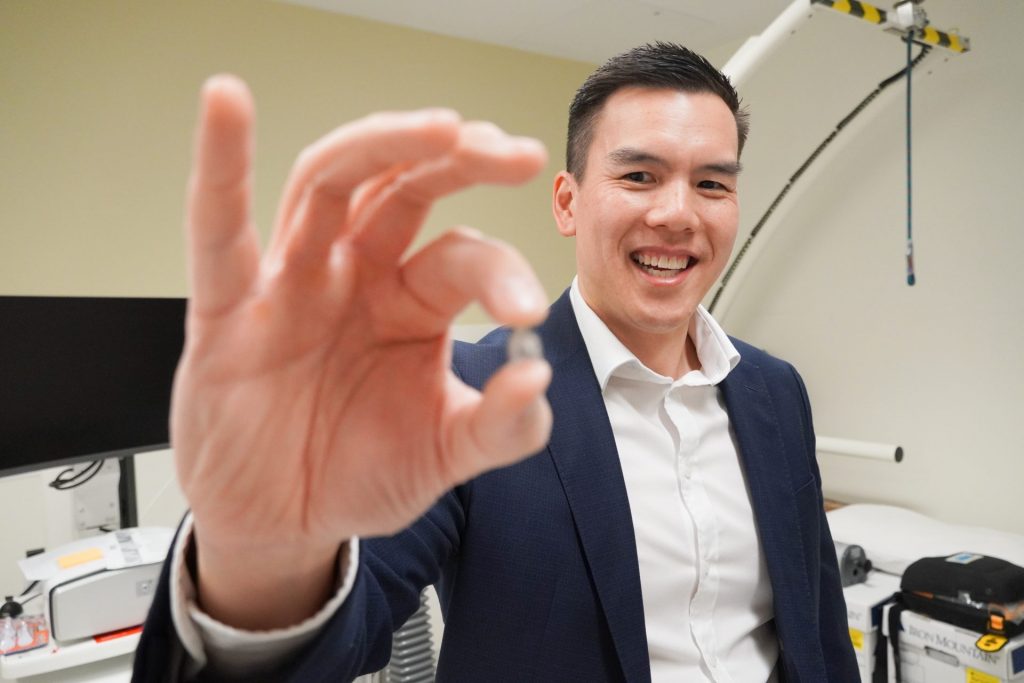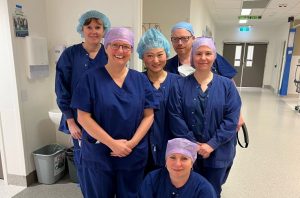A world-first study examining the effect of bronchoscopic lung volume reduction for patients with emphysema is underway at the Royal Adelaide Hospital.
The procedure is proven to be highly beneficial, but the researchers are using a suite of cardiac, respiratory and exercise tests to better understand who could benefit the most and who should avoid the surgery.
A proven solution to a global problem
For patients with severe emphysema, breathlessness is a significant symptom that they often suffer from. This makes living life a challenge. Basic activities, such as walking, shopping and even eating can be too difficult,
The cause of this is through several complex changes in the body. Principally, the issue is a consequence of over inflation of the lungs due to an inability to exhale all of an inspired breath.
Bronchoscopic Lung Volume Reduction (BLVR) is a new approach to treating these patients. It involves placing tiny, one-way valves in the airways of hyperinflated areas of the lungs, allowing air to escape but not re-enter. These valves effectively, deflate the hyperinflated area.
To date, BLVR is a safe and proven treatment, but not every patient responds in the same way. The overall success rate for BLVR is around 80% and the team in CALHN want to understand why and how this could be improved.
“Not everyone responds exactly the same way to BLVR every time, so we want to better understand this cohort that does respond so that we don’t have to put patients through unnecessary procedures if they don’t have to,” said Dr Andrew Fon, principal investigator and Respiratory and Sleep Medicine Physician, Interventional Pulmonologist at The Queen Elizabeth Hospital.
“A better understanding of the physiological changes that occur with BLVR, will lead to better identification of the ideal candidate for this procedure. Our research has the potential to increase the availability of this treatment to more patients, if we can better understand their underlying pathophysiology.”
New knowledge for better care
Previous studies that have examined the effect of BLVR procedures have used a small number of tests, focussing on lung function tests, walk distances and self-reported quality of life.
The EMphysema, PHYSiology, and exercISe responsE Trial (EMPHYSISE) is the first study in the world to additionally examine other cardiopulmonary measures using more direct physiological testing, such as Cardiopulmonary Exercise Tests, Cardiac MRI, and Nuclear Medicine scans to look at changes not only in the lungs, but also the heart and the pulmonary vasculature.
The trial is underway and actively recruiting, and the research team have already observed further evidence of the benefits of the procedure.
“What we’re seeing is that patients who do respond to this therapy have improved Cardiac and Respiratory function, which translates to improved exercise capacity. This translates to the patients in real terms with improved quality of life and activity.”
“So from that point of view it has been a great success so far.”
“For the patients, it can be the difference between being house bound, to be able to go to the shops and do a weekly shop, or be able to keep up with grandchildren at the playground.”
“We hope that this work will allow us to reduce that number of people who don’t respond, because we’ll be able to pre-select only those patients who stand to benefit.”



